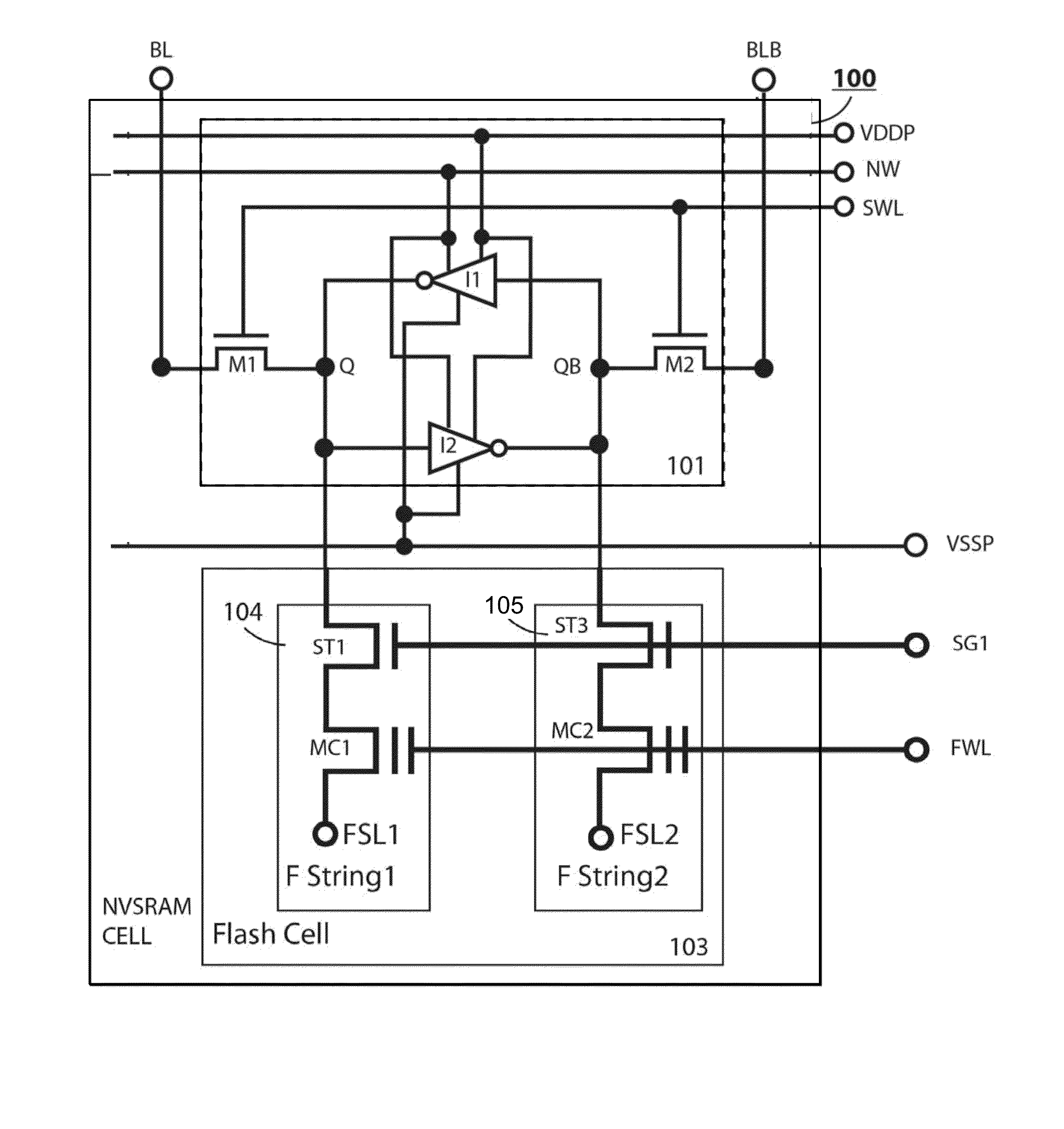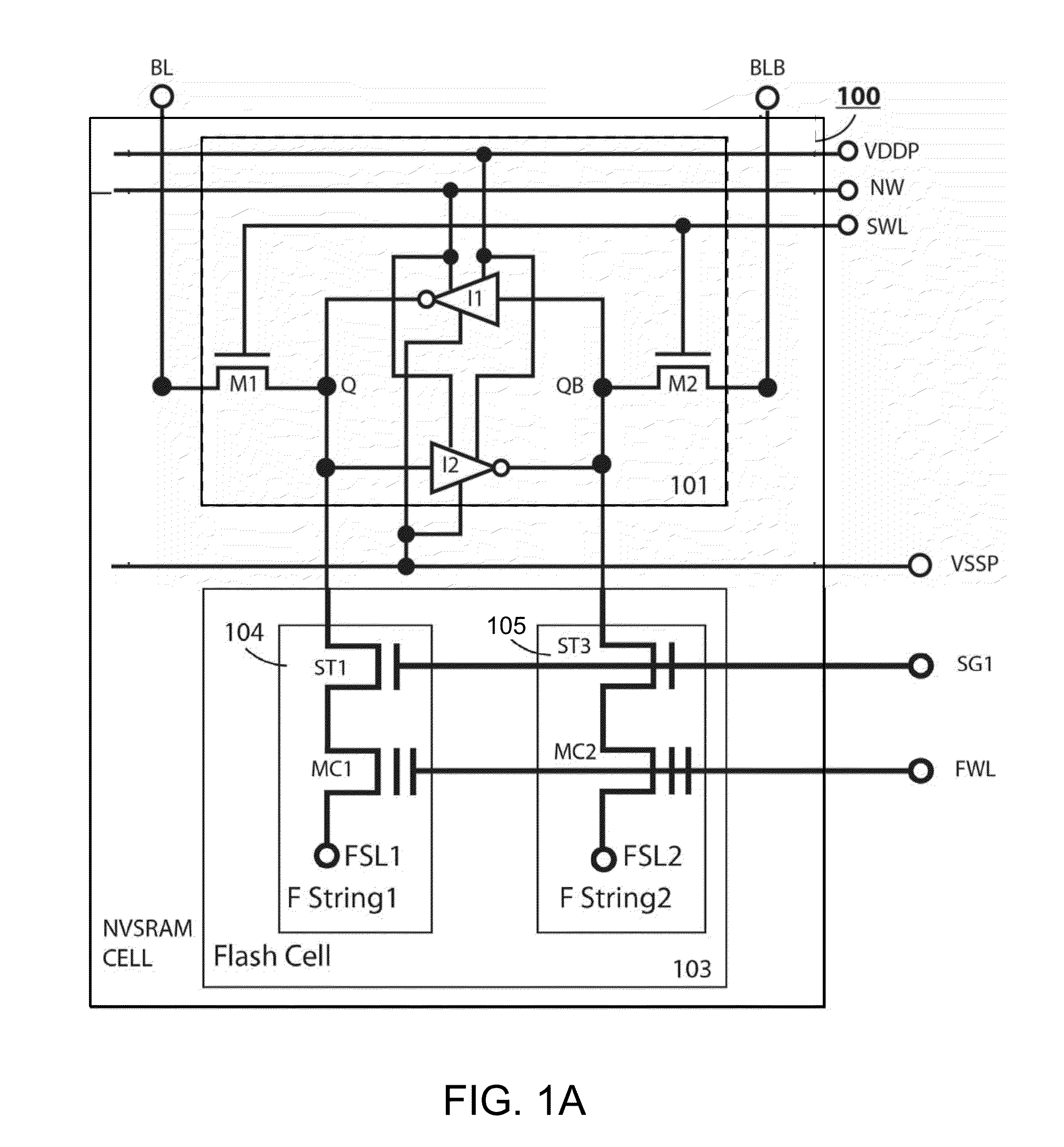10T NVSRAM cell and cell operations
a technology of nvsram and nvsram memory, applied in the field of 10 t nvsram cell and cell operation, can solve the problem of large 12t cell size of nmos nvsram memory, and achieve the effect of high array efficiency
- Summary
- Abstract
- Description
- Claims
- Application Information
AI Technical Summary
Benefits of technology
Problems solved by technology
Method used
Image
Examples
Embodiment Construction
[0051]The present invention is related to improvement in NVSRAM cell size over the traditional 12T NVSRAM cell by using fewer transistors, becoming a 10T NVSRAM cell. The 10T NVSRAM cell can be configured to in several biased conditions for successful NVSRAM operation. The same cell-size reduction improvement can be applied to those all NVSRAM cells that comprises at least one paired 3T Flash strings, regardless of flash type made of NMOS or PMOS, regardless of 2-poly Floating-gate or 1-poly Charge-trapping SONOS or MONOS devices. A preferred 10T NVSRAM cell is provided by removing one bottom HV Select transistor from each 3T Flash string. Thus one paired Flash strong would save two HV Select transistors.
[0052]In a specific embodiment, the 10T NVSRAM cell circuit can be configured by removing one paired HV bottom Select transistors from the traditional 12T NVSRAM cell that comprises one 6T LV SRAM cell and one HV flash cell that further comprises one paired 3T flash FStrings. Each 3...
PUM
 Login to View More
Login to View More Abstract
Description
Claims
Application Information
 Login to View More
Login to View More - R&D
- Intellectual Property
- Life Sciences
- Materials
- Tech Scout
- Unparalleled Data Quality
- Higher Quality Content
- 60% Fewer Hallucinations
Browse by: Latest US Patents, China's latest patents, Technical Efficacy Thesaurus, Application Domain, Technology Topic, Popular Technical Reports.
© 2025 PatSnap. All rights reserved.Legal|Privacy policy|Modern Slavery Act Transparency Statement|Sitemap|About US| Contact US: help@patsnap.com



